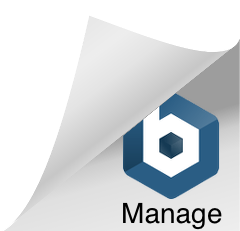What is a Special Enrollment Period (SEP)?
Each year, there is an Open Enrollment Period when you can buy or change your Marketplace health insurance plan. The dates change from year to year, although they typically fall between November and January. But what happens if you miss that Open Enrollment Period or want to change your health insurance plan at a later date? Enter the Special Enrollment Period.
What is a Special Enrollment Period?
A Special Enrollment Period is a window of opportunity when you can enroll in health insurance outside of Open Enrollment. In most cases, an SEP will last 60 days after you become eligible.
What makes you eligible for an SEP?
To be able to enroll in health insurance during an SEP, you have to experience a qualifying life event. Qualifying life events fall under the following six main categories:
- Loss of qualifying health coverage
- Change in primary residence
- Change in household size
- Enrollment or plan error
- Change in eligibility for Marketplace coverage or for help paying for coverage
- Other situations or exceptional circumstances
To make things easier, we created a FREE guide to highlight each type of qualifying life event. You can grab it here and save to your computer for future reference.
It’s also important to know that you will not qualify for an SEP if you lose health insurance due to fraud or non-payment of premiums, or if your change in residence is solely for vacation or for medical treatment.
Find out now if you qualify for an SEP.
What do I need to do to get health insurance during an SEP?
Once you have a qualifying life event, you should start comparing health insurance plans to find the right one for you and your family. Consider things such as whether an HMO or PPO plan will be better and which metal tier plan makes the most sense for you.
You can self-enroll on HealthSherpa.com or call (855) 772-2663 to speak with a Consumer Advocate team member who can help you with the process.
Because you are enrolling during an SEP instead of Open Enrollment, there may be a few additional steps after you complete your initial enrollment. Typically, this is because the government needs to verify that you did indeed have a qualifying life event. In such cases, you will receive an “Eligibility Results Notice” that details the type of documents needed to finalize your enrollment. You have 30 days after you pick your plan to submit the requested documents. Here’s a breakdown of the specific documents requested for various types of qualifying life events.
Once you get your SEP verification, you can make the first payment on your health insurance premium.
If I enroll during an SEP, when does my health coverage start?
The date your new coverage starts depends on the type of qualifying life event you have as well as when you enroll in your new health insurance plan. If you enroll by the 15th of the month, your coverage will typically start the first day of the next month. If it’s after the 15th, it will be the first day of the second month. For certain circumstances, such as having or adopting a child, coverage will be retroactive to the date of birth or adoption.
Verification for SEP eligibility typically does not take too long. But no worries if it does and your coverage start date passes before you are confirmed. If this occurs, you’ll be eligible for retroactive coverage as soon as you are confirmed and pay the premium.
What if I miss my SEP?
If you qualify for a Special Enrollment Period but miss your window of opportunity, you will have to wait until the next Open Enrollment Period to purchase health insurance, unless you have another qualifying life event before then.
If your household income is low, however, you may qualify for Medicaid or the Children’s Health Insurance Program (CHIP). Both programs allow enrollment at any time during the year.













Leave a Comment